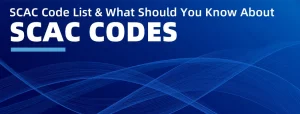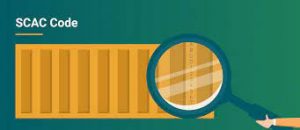How to get a scac code and challenges future?
How to get a scac code? – as the transportation industry continues to transform, the Standard Carrier Alpha Code (SCAC) faces a range of challenges. In this article, we will explore the current obstacles and delve into the future prospects of SCAC codes. Understanding the challenges and envisioning their potential solutions is crucial for stakeholders in the logistics and supply chain sectors.

How to get a SCAC code?
Carriers can obtain a SCAC code by applying directly to the NMFTA. The application process requires carriers to provide information such as their legal name, address, and type of transportation services provided. The NMFTA reviews the application and assigns a unique code to the carrier.
Changing Carrier Landscape:
One of the significant challenges faced by SCAC codes is the constantly evolving carrier landscape. Mergers, acquisitions, and bankruptcies can lead to shifts in carrier identities and ownership, requiring adjustments to SCAC code systems. Maintaining accurate and up-to-date information becomes vital to ensure smooth operations and reliable carrier identification.
Globalization and Cross-Border Operations:
With the increasing globalization of trade, cross-border operations present unique challenges for SCAC codes. Harmonizing SCAC codes across different countries and regions can be complex, as each nation may have its own coding systems or variations. Streamlining SCAC code usage internationally is crucial for seamless coordination and efficient freight management.
Technological Advancements and Integration:
The future of SCAC codes lies in their integration with advanced technologies. Artificial Intelligence (AI), blockchain, and other emerging technologies offer opportunities to enhance the functionality and effectiveness of SCAC codes. Leveraging AI algorithms for smarter carrier identification and utilizing blockchain for secure and transparent data exchange can revolutionize the SCAC code ecosystem.
Data Standardization and Interoperability:
As data becomes increasingly crucial in supply chain management, ensuring data standardization and interoperability poses a challenge for SCAC codes. Harmonizing data formats and establishing interoperable systems that can seamlessly exchange information among carriers, shippers, and other stakeholders is essential. This would improve data accuracy, reduce manual errors, and streamline communication.

Industry Collaboration and Governance:
To overcome the challenges and shape the future of SCAC codes, collaboration among industry participants is vital. Establishing industry-wide governance bodies or associations can facilitate the standardization of SCAC code practices, promote best practices, and address emerging issues collectively. Encouraging collaboration ensures that SCAC codes remain relevant and adaptable to the evolving needs of the transportation industry.
Conclusion of question about how to get a scac code?:
While SCAC codes face challenges in a rapidly changing transportation landscape, they continue to play a crucial role in carrier identification and freight management. Overcoming these challenges requires proactive industry collaboration, embracing technological advancements, and adapting to emerging trends. By addressing the evolving needs of global trade and embracing innovative solutions, SCAC codes can pave the way for efficient, transparent, and seamless logistics operations in the future.